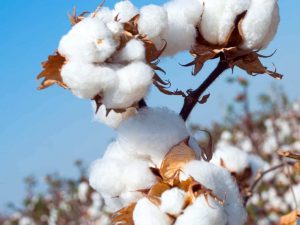
NEW DELHI: Amid labour shortage caused by the coronavirus-related curbs, Punjab plans to focus on crop diversification and have more mechanisation options including use of technology as sowing of kharif crops has started in the northern state .
The state’s push for crop diversification – not only to deal with labour shortage but to improve farmer income and promote less-water intensive crops – has been in place for over a year now. The state government officials and experts feel that this, along with more mechanisation, could yield better results for farmers.
Sowing of paddy (rice) in Punjab started on Wednesday. The Captain Amarinder Singh-led state government has been encouraging farmers to opt for direct seeding of rice (DRS), which is considered to be a less labour-intensive method.
“Regarding diversification, we started in an organised manner since last year,” said Sutantar Kumar Airi, director of department of agriculture and farmer welfare in Punjab. Airi added that the state focused on diversification of three main crops – maize, cotton and basmati rice, which “comparatively” requires less labour than paddy.
Paddy, a water-intensive crop, is one of the major ones grown in Punjab. The state is among the top five, including West Bengal, Uttar Pradesh, Andhra Pradesh and Tamil Nadu, in rice production.
“The covid-19 pandemic has come with its own set of problems including movement of staff and goods. But we are doing whatever we can to overcome it. We are trying for mechanised sowing now through DSR. We were aiming five lakh hectare through that technique but it could be upto 6.5 lakh hectares. We are making available 4,400 machines to farmers,” Airi said.
“Earlier also farmers had these machines but when labour shortage became visible, they were more keen in purchasing it. We are diverting our budget to that side and demanding more budget also for it. Labour shortage is definitely a problem and farmers are looking for local labour now,” he added.
According to a report by the Punjab planning department, paddy and basmati together account for approximately 40.26% of the gross cropped area while wheat is grown in 39.35% of the area. Meanwhile, cotton, potato, maize and sugarcane respectively occupy 3.75 %, 3.13 %, 2% and 1.35% of the gross cropped area.
Experts say that along with shortage of labour, increase in wage also forces farmers to move to technology and diversify into other techniques of growing crop. Farmers are also looking at traditional methods of sowing directly, which is a traditional technique, saves water but gives less productivity.
“Whenever a pandemic has happened earlier, labour shortage usually emerge and wage rate increase has happened. This is also a time when substitution to technology from labour is expected to take place but there are other ways through which farmers are coping. One is that local labour is being utilised now, who were not doing this work earlier. Secondly, direct seeding is being done. That will be the change in saving some water also. But we will we see that production will decline and if farmers save on labour money today, they will lose productivity and they will have loses,” Lakhwinder Singh, director, centre for development economics and innovations studies and head of economics department at Punjabi University said.
He said that the impact is of two kinds – area from paddy is being diversified to cotton and paddy is directly being sown instead of transplantation. Ultimate impact is that the harvest will yield less income for farmers. The net effect will be negative on farmers. With the spread of corona, farmers are looking to go back to older techniques but the shift to newer crops isn’t happening crops like maize do not have a big market.
“Maize is not the right crop for Punjab. Prior to Green Revolution, people were mostly sowing maize but unseasonal rain destroys the crop. Maize consumption is good for winter season and consumption is lower in the summer. So it either used for ethanol or animal feeding. The rate per quintal is not very good and farmers are not motivated to make the shift,” Singh added.



